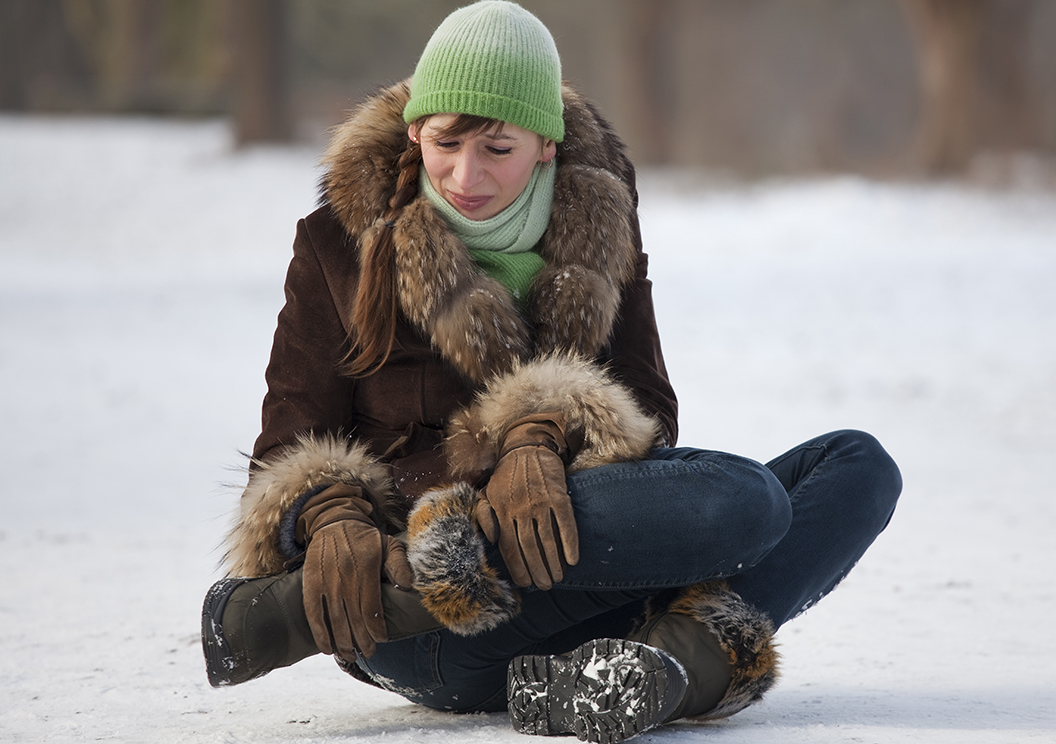Living in Western New York, you can’t avoid cold, snow, and ice during the winter, but you can prevent serious winter-related injuries. In an earlier blog post, Dr. Riegel discussed heart attack risks. This week, Dr. Falcone, an orthopedic surgeon, offers tips for protecting your bones, joints, ligaments, tendons, and muscles.Thousands of people every year suffer from preventable injuries during the winter months. To protect yourself, observe some basic safety tips to prevent yourself from being one of them.
Protect Your Body, Inside and Out
Cold temperatures make muscles, tendons, and ligaments more prone to injury, so you’ll want to mitigate the risks of spending time outside by:
- Keeping your body warm. Wear appropriate outerwear and layer your clothing to accommodate your body’s constantly changing temperature. Your layers should be light, loose, water-resistant, and wind-resistant.
- Stretching. Warm up your muscles before shoveling, putting up or taking down holiday lights, or performing other outdoor home-care tasks.
- Staying Drink enough water! It’s natural to worry about dehydration in the heat of summer, but in winter, don’t forget our bodies are often working harder to move under extra or heavier clothing, breathing harder from exertion, and sweating when we’re inside over-heated buildings. If your body becomes dehydrated, lactic acid builds up in your muscles, which can cause cramps and bodily strain—greatly increasing the chance of falling and other injuries. Proper hydration helps keep your muscles and ligaments healthy, and it even helps with pain relief and healing.
- Wiping your shoes thoroughly when you enter a building. Snow and ice build up in the soles and can cause you to slip when you step onto a smooth, hard floor.
Beware of the Biggest Problem
Falling or slipping on icy outdoor surfaces, of course, is the biggest issue we face in the winter months. Both can cause broken bones, wrenched backs, sprained joints, or head injuries. We all take walking for granted, but if you try to walk in the winter like you do in the summer, you’re putting yourself at risk.Two things are essential to injury prevention: wearing boots or shoes designed for maximum safety on ice and snow and changing the way you walk. Slip-resistant footwear is key. So is taking shorter steps with slightly bent knees and taking things slow—try not to rush or run. If you have the choice between walking on potentially icy pavement or snowy grass, choose the grass. That way, if you fall, you’re less likely to be hurt. And, when you’re out and about, use handrails whenever possible, treat every walkway as though it has black ice, and keep your hands out of your pockets – you may need your arms for balance or to catch yourself. In fact, if you have to navigate black ice, walk like a penguin: widen your stance, spread your arms, and do your best to balance.
And if you do fall? Bend your elbows and knees to help your arms and legs absorb the impact, and be mindful of how you get up.
Prepare to Drive Differently
Winter driving can be harmful to your body, including preparations. Scraping ice and snow off your car—be sure to clear both windshields!—can bring about damage to joints, tissue, and muscles. Shoveling, with all the lifting, twisting, and throwing it requires, can cause muscle strains, sprains, and soft tissue injuries. Try pushing the snow away instead of lifting it onto your shovel. If you lift it, protect your back by keeping a slight bend in your knees. And listen to your body: if something is starting to hurt, take a break. Finally, pay attention to severe weather warnings. If you don’t have to be out on the roads when conditions are snowy or icy, don’t go anywhere. But if you do, take proper precautions to avoid abrupt stops, skids, and collisions—which can cause concussions, whiplash, back injuries and broken bones.
One final note: if you have any pre-existing orthopedic conditions, including and especially joint implants or any kind of surgical reconstruction, be sure you talk to your physician about any extra precautions you might have to take in the winter weather. We want everyone to enjoy the great outdoors this winter – safely!

 APPLY ONLINE TODAY!
APPLY ONLINE TODAY!





